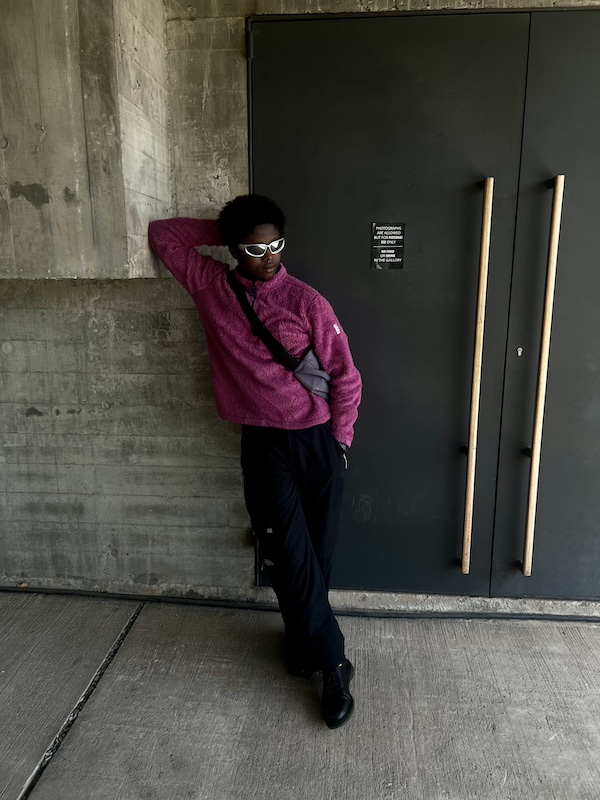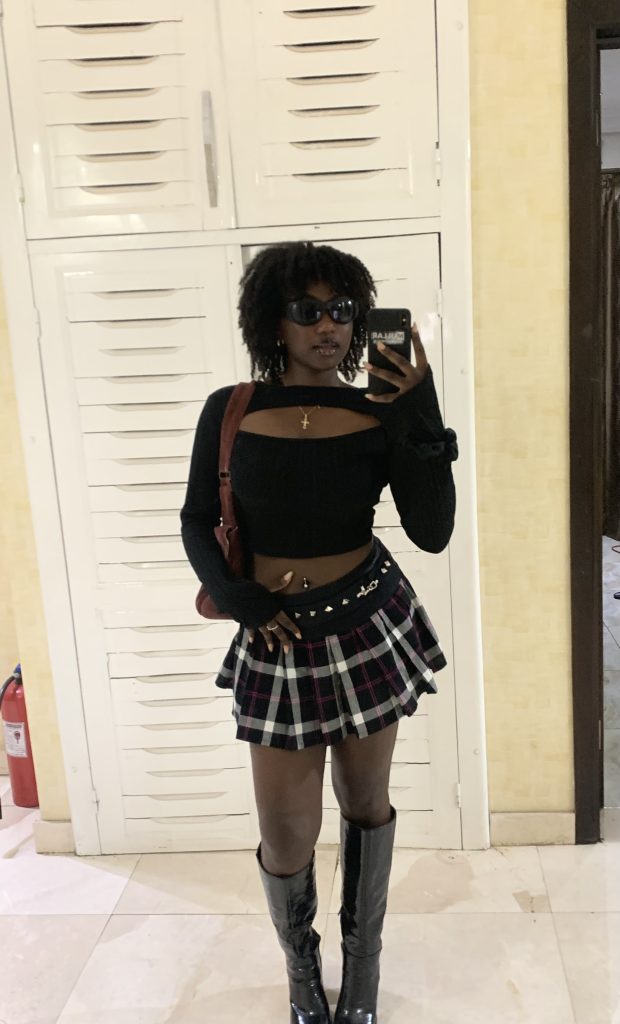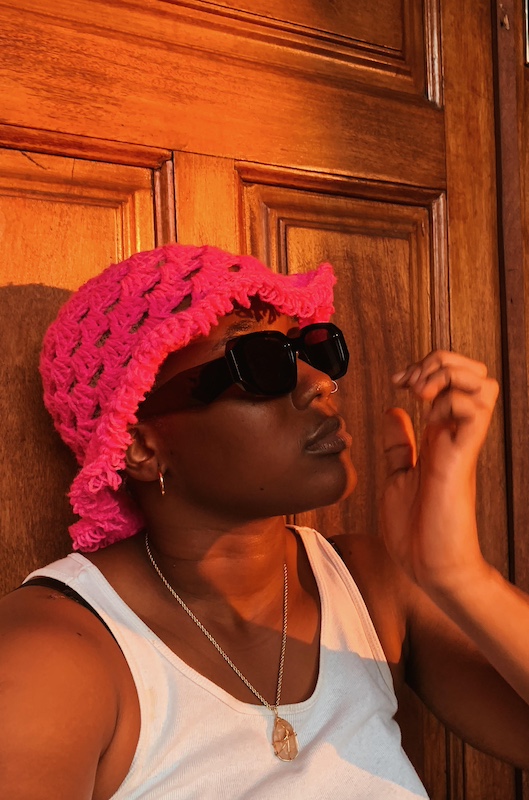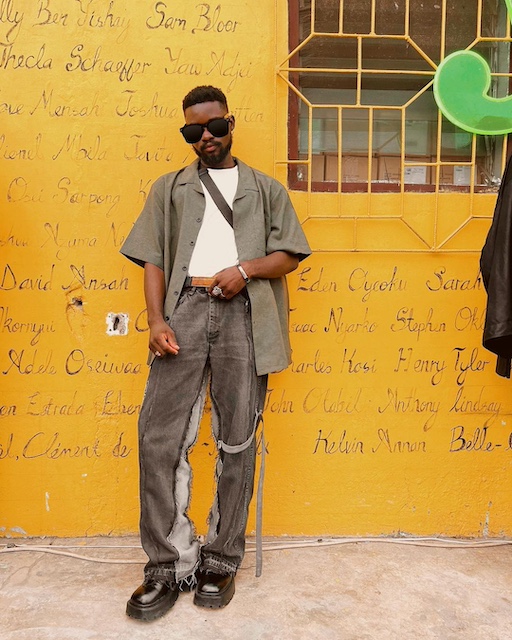Few years ago, getting clothing from a second-hand operator or vendor was considered tacky. Thrifting, or Foose, as it is known in Ghana, has long been the go-to wardrobe option for those with financial resources to purchase high-fashion clothing from reputable labels. Foose merchants, found in markets and along lorry stations, served as the everyday person’s fashion store. It was the place one could go to get their hands on “Gunchi,” or vintage original Gucci merchandise. Surprisingly, some people did not care about the authenticity of what they were wearing. Rather, it was all about getting a designer (knock-off or not) they could afford without breaking the bank.

Visiting a Foose market seemed like a scavenger hunt. Getting the top picks necessitated an early arrival, hence the name “first selection.” This was the very first pair of clothes made available by the vendor. As a result, customers would frequently come to these Foose markets as early as 4 a.m., just as the merchants were unloading their merchandise, to allow enough time to sift through the things and select the best merchandise before more people arrived. The thriving Foose market at the time introduced various phrases or words into the fashion industry and general jargon.
Phrases like “Broni wawu,” which translates to garments no longer needed by the white man from the west who was brought to Ghana, and another term, “Bend Down Boutique,” became popular as a result of Foose Business. These phrases indicate how customers obtain their merchandise. In actual boutiques, clothing is hung or displayed on mannequins for buyers to view and choose from. However, clothes sold at the Foose Market were often poured onto a mat or larger fabric spread on the floor, requiring potential purchasers to bend down to select what they desired. Hence the moniker “Bend Down Boutique.”
While Kantamanto Market is Ghana’s thrift capital, other thrift hotspots include Blue Light in Kumasi, Madina Market, Lapaz Traffic, and PZ in Kumasi, where people shop for products other than fashion. While thrifting was a common practice in the West, the concept was not well received in Ghana. People who bought their stuff through thrifting were often viewed as destitute and unable to afford original products.
Surprisingly, the narrative has shifted in recent years, as thrifting has become the preferred option for people across the social spectrum.
Thrifting has become so popular in today’s social scene that it has been dubbed the “new cool.”. Thrifters, whether as buyers or sellers, are frequently regarded as knowing what is trendy in terms of fashion. With the rise of Y2K, alt, and other niche lifestyles, thrifting has become increasingly popular, with people hosting pop-ups, sales, and other events where people can get their hands on thrifted stuff.
To provide some extra context to the current interest in thrifting and what may have influenced it, we speak to some known stylists and thrifters who had this to say about the culture;

My introduction to thrifting was through the economy, actually. The prices of clothes have become absolutely ridiculous and shipping is another headache as well. Also, I wanted more unique pieces. I love thrifting because I love to experiment with my clothes. I’ve been able to bring a lot of ideas on my Pinterest board to life through it and it’s so cool and exciting.
First of all, having an unlimited wardrobe with limited funds and also finding really cool and unique pieces. Again, support small black businesses too, because we all need to eat, innit? For the buyer, don’t be afraid to buy pieces even if you don’t know how you’re gonna style it yet.
Another tip is to try to put your outfit together in your head, or for more practicality, use a fashion board because it helps you envision things properly.
For the seller, please reply on time. I wanted things urgently on a particular day, only to get replies days later. Very bad for business. And please please please know what thrift means. A lot of people use the word loosely.

My sisters and I planned a thrifting trip once, which didn’t go as planned, but I’ve been obsessed since. The vast variety of colours, different types of materials, and prints, as well as the exposure to different cultures and languages, got me carried away, and I ended up buying clothes that didn’t fit the way I wanted them to. I grew up as a very shy and reserved kid, so whenever I would go to the market with my mom or sisters, I would literally beg my mom to get me more clothes every time. I used to hide in my room and dress up, using those clothes to create different characters based on my personality and the type of person I wanted to thrive with.
Every outfit I create has its own special character. I can wake up and decide who I want to be that day. It’s helped me become much more confident, and I see it as a way of sharing different aspects of my personality without really talking about them. Thrifting has influenced my style in so many ways. It’s pushed me to step out of my comfort zone when it comes to experimenting with my personal look, and I love the positive impact it’s had on my fashion choices.
Social media has a big impact on raising awareness about sustainable fashion, which seeing people share their thrift hauls and talk about the environmental impact of clothing helps us become more conscious consumers. For anyone looking to get into thrifting;
- Focus on the quality of the clothes. A lot of thrifted clothing tends to be worn out at the neck or design area, so it’s good to keep an eye out for that.
- Curate a diverse selection of clothes, and mix the basics with unique pieces instead of buying or selling just the basics.
- Learn how to upcycle your own clothing and create personal pieces.

When I reflect on my introduction to thrifting, it takes me back to my primary school days. Every year, as a new school year approached, my mother would take my siblings and I to what we fondly referred to as the ‘Fose Line.’ Little did I know then that this was my first foray into the world of thrifting. Looking back, I realize how those experiences have significantly influenced my sense of fashion and my understanding of the value of a good deal. The memories of those early thrifting adventures have shaped my personal style in ways I never could have anticipated. Thrifting has allowed me to explore different fashion styles and experiment with eclectic looks. I love the thrill of finding something special and unique that no one else has. It has also made me more conscious of sustainable fashion and the importance of reusing and recycling clothing. Thrifting has definitely added a lot of character and individuality to my personal style.
When it comes to the growing interest in thrifting within the fashion space, I believe it’s the combination of individuality, affordability, and sustainability. The desire for unique and personalized style amongst many fashion enthusiasts makes thrifting more feasible. It offers the opportunity to curate a unique, stylish wardrobe on a good budget, discovering a treasure trove of one-of-a-kind pieces that you won’t find in mainstream stores.
Also, people are becoming more conscious of the environmental impact of fast fashion and are seeking alternatives that are more eco-friendly. Thrifting allows room to give new life to pre-loved clothing, reducing waste and promoting a more sustainable approach to fashion.
When it comes to thrifting, especially as a buyer, patience is really the key. Since nothing good comes easy, it may take some time to come across the perfect piece. It is all about the thrill of the hunt. Take the time to explore different thrift stores or places while opening yourself to possible alternatives. You never know what hidden gems you might find. So enjoy the process and keep an open mind!
If you’re planning to sell your thrifted finds, it’s important to curate a collection that appeals to your target audience.
Lastly, I would recommend you embrace creativity and individuality. Thrifting offers endless opportunities for self-expression and personal style. Don’t be afraid to mix and match different pieces to create unique outfits.
Written by: Nana Kojo Mula
